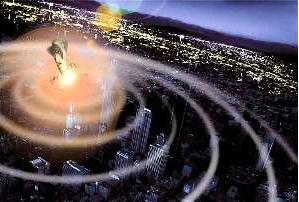
Remember back in the day when we actually planned to fight and win a nuclear war? You know, a couple hundred millions dead on three or more continents, but we could still order CHEMWIPES?
Well, part of that was trying, with mixed success, to EMP harden the electronic equipment. Here is a good review of what has been in the Salamander Red Team's Top 5 from the start. Forget the nightmare of all the non-EMP hardended equipment in your Ships, Squadrons, Submarines, and Diversity Directorates going down. Think about the civilian side - the WallStreetJournal reminds us that we just may be walking around with our pants down.
Imagine you're a terrorist with a single nuclear weapon. You could wipe out the U.S. city of your choice, or you could decide to destroy the infrastructure of the entire U.S. economy and leave millions of Americans to die of starvation or want of medical care.Warm beer - icky. NMCI; slightly more degraded. At least you know that in a pinch, your JO's will do all they can to protect you.
The latter scenario is the one envisioned by a long-running commission to assess the threat from electromagnetic pulse, or EMP. The subject of its latest, and little discussed, report to Congress is the effect an EMP attack could have on civilian infrastructure. If you're prone to nightmares, don't read it before bedtime.
An EMP attack occurs when a nuclear bomb explodes high in the Earth's atmosphere. The electromagnetic pulse generated by the blast destroys all the electronics in its line of sight. For a bomb detonated over the Midwest, that includes most of the continental U.S. Few, if any, people die in the blast. It's what comes next that has the potential to be catastrophic. Since an EMP surge wipes out electronics, virtually every aspect of modern American life would come to a standstill.
The commission's list of horribles is 181 pages long. The chapter on food, for instance, catalogs the disruptions up and down the production chain as food spoils or has no way to get to market. Many families have food supplies of several days or more. But after that, and without refrigeration, what? The U.S. also has 75,000 dams and reservoirs, 168,000 drinking water-treatment facilities, and 19,000 wastewater treatment centers -- all with pumps, valves and filters run by electricity.









No comments:
Post a Comment